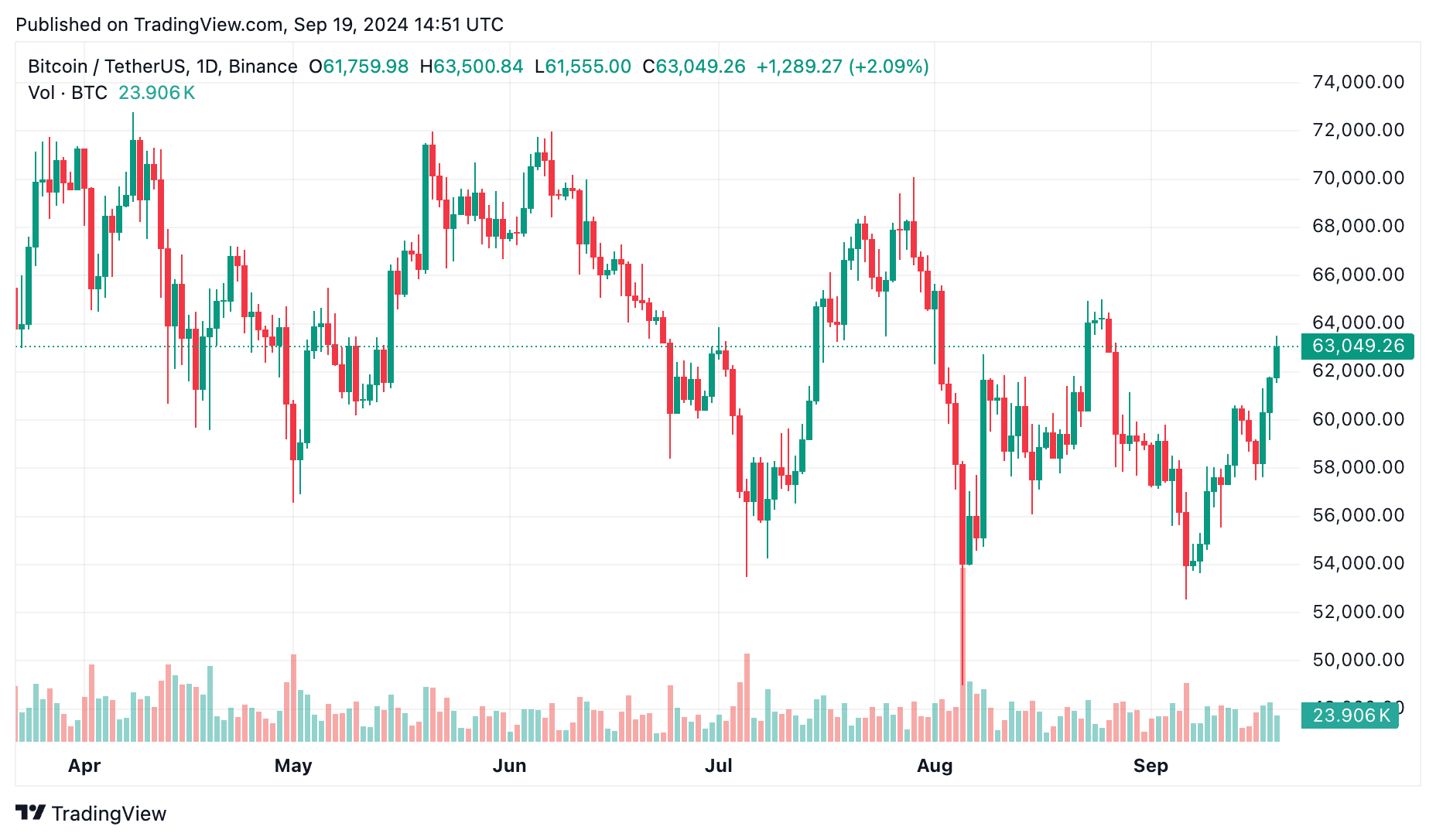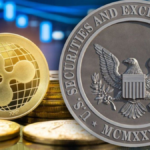Why did the Federal Reserve reduce rates by 50 bps, the most significant cut since 2020? What underlying risks are they attempting to mitigate, and could this decision backfire for the economy?
Fed drops a “bomb”
On September 18, the U.S. Federal Reserve made a surprising announcement, decreasing its benchmark interest rate by 50 basis points (bps)—the first reduction since the onset of the pandemic in March 2020.
This change lowered the rate to a range of 4.75% to 5%, a drop that exceeded expectations from many analysts. For reference, the rate had been at a 23-year high, fluctuating between 5.25% and 5.50%.
The Fed’s decision follows encouraging news regarding inflation. In August, U.S. consumer price inflation fell to its lowest level since February 2021, resting at 2.5% — just under the projected 2.6%.
Nevertheless, core inflation, which excludes food and energy prices, increased by 0.3%, indicating that latent pressures still exist. Additionally, job creation has slowed, and while the unemployment rate has risen slightly, it remains relatively low overall.
In its press release, the Federal Open Market Committee reaffirmed its goal of reducing inflation to 2%, hinting at a potential transition toward an extended period of easing. This is especially relevant given that U.S. inflation previously peaked at an alarming 9.1% in June 2022 under the Biden-Harris administration.
The pressing question is: what implications does this hold for the crypto market? Will this easing flood the market with liquidity and elevate crypto prices, or will unpredictability keep investors on the sidelines?
Stocks and crypto in green
In the wake of the Fed’s unexpected rate cut, the stock market first experienced varied reactions. On September 18, traders reacted positively to the 50 basis point reduction, with major indices like the Dow Jones and S&P 500 showing gains.
However, by the end of that trading day, the excitement subsided. Stocks closed lower, reflecting increasing fears that the Fed might be preparing for potential economic weakness.
On September 18, the Dow Jones Industrial Average fell by 103 points, or 0.25%, ending at 41,503. Earlier in the day, it had surged over 375 points before retracting. The S&P 500 declined by 0.29% to close at 5,618, while the Nasdaq Composite dropped 0.31% to finish at 17,573.30.
Yet, as of September 19, markets have embraced the rate cut enthusiastically. At the time of writing, trading is still ongoing, and indexes have experienced a significant surge.
The Nasdaq has rallied, increasing by 476 points—over 2.7%—and reaching a high of 18,050, while the S&P 500 has climbed by 93 points, a rise of more than 1.66%, resting at 5,711.
In the meantime, the crypto market has also turned bullish. The total market capitalization has risen by nearly 6.5% in the past 24 hours, reaching $2.18 trillion.
This signifies a notable turnaround from prior apprehensions. On September 18, Bitcoin (BTC) surged past the $62,000 resistance level, a hurdle it hadn’t crossed since late August. At that time, BTC was trading around $64,000 before plummeting to approximately $54,000 by September 9.
Currently, BTC is gaining momentum with a strong upward trajectory, increasing over 6.5% in the last 24 hours, now trading at around $63,500. Ethereum (ETH) is also on the rise, currently priced at $2,430, up by more than 6%.

Altcoins within the top 100 are experiencing remarkable gains, with increases ranging from 15% to 30%, marking one of the largest single-day spikes in recent times.
Looming concerns surrounding the financial markets
The recent 50 bps rate cut by the Fed has ignited serious apprehensions within the financial community. A viewpoint expressed by The Kobeissi Letter, a respected financial newsletter, draws troubling parallels between this rate cut and similar actions in the past.
In their X thread, they noted that this marks only the third occasion in recent history where the Fed has initiated a rate-cut cycle with such a substantial reduction—an action that warrants scrutiny.
The Kobeissi Letter states that the last two instances of such an aggressive rate cut occurred in 2001 and 2007. In both cases, the economy didn’t merely stumble—it fell apart.
“In 2001, when the Fed initiated a 50 bps rate cut, Nasdaq returns plummeted -76% from peak to trough over a three-year span.”
Essentially, technology stocks faced significant declines, marking one of the most severe bear markets in history.
Things did not improve in 2007 when the Fed’s rate cuts coincided with the global financial crisis. Once again, the Nasdaq fell by an astounding 56% from its peak, inflicting widespread damage across the tech sector and beyond.
Fast forward to 2024. We find ourselves in a substantially different landscape—tech stocks are at record highs, and the Nasdaq has risen sharply. Still, The Kobeissi Letter poses a vital question: “Clearly, 2024 is much different from 2001 and 2007, so why is the Fed cutting rates so aggressively?”
Their concern stems from the fact that history has not been favorable when the Fed initiates a rate-cut cycle with such a noticeable reduction. In both previous examples, these actions were succeeded by severe recessions, market crashes, and widespread economic turmoil.
So, what can be anticipated in 2024? On the surface, the economy appears to be relatively robust. Job growth may have decelerated, and unemployment has ticked upwards slightly, but it still resides at historically low levels. Inflation is decreasing too—having dipped to 2.5% in August, the lowest since February 2021.
However, there may be hidden concerns lurking beneath the surface. The Fed’s proactive rate cut could imply that they recognize risks which the broader market has yet to fully comprehend.
Perhaps they are preparing for a decline in economic growth or attempting to alleviate the impact of rising debt levels, which have been escalating as borrowing costs soared during the recent tightening phases.
It’s also essential to note that the stock market reacted with mixed signals. Initially, traders celebrated the rate cut, propelling the Dow and S&P 500 to new heights. But by day’s end, reality kicked in, and both indices ended lower. The forthcoming months will be critical in determining whether a turbulent period lies ahead, or if this time will truly break the cycle.








